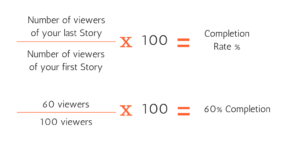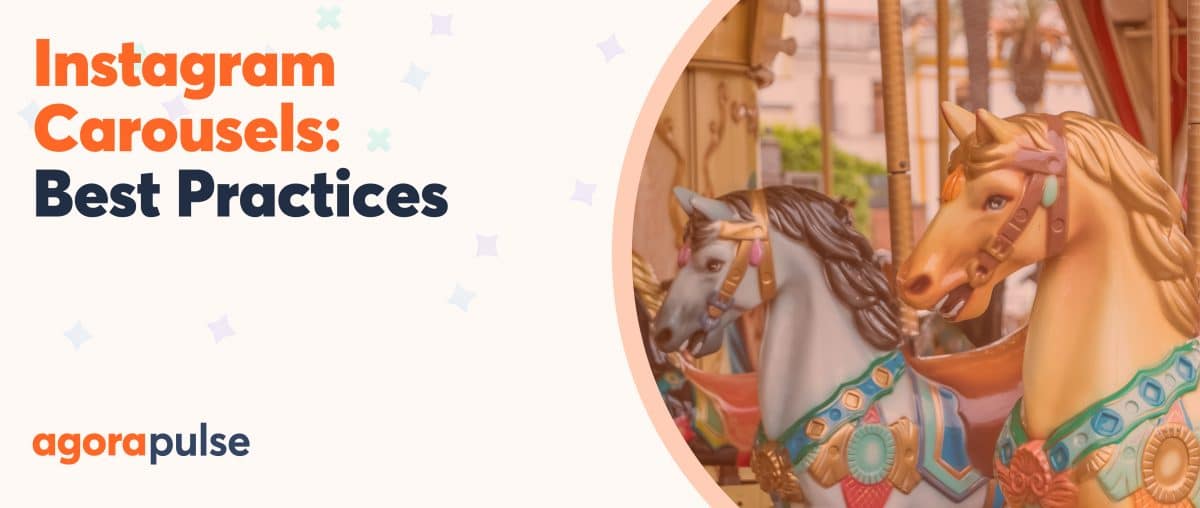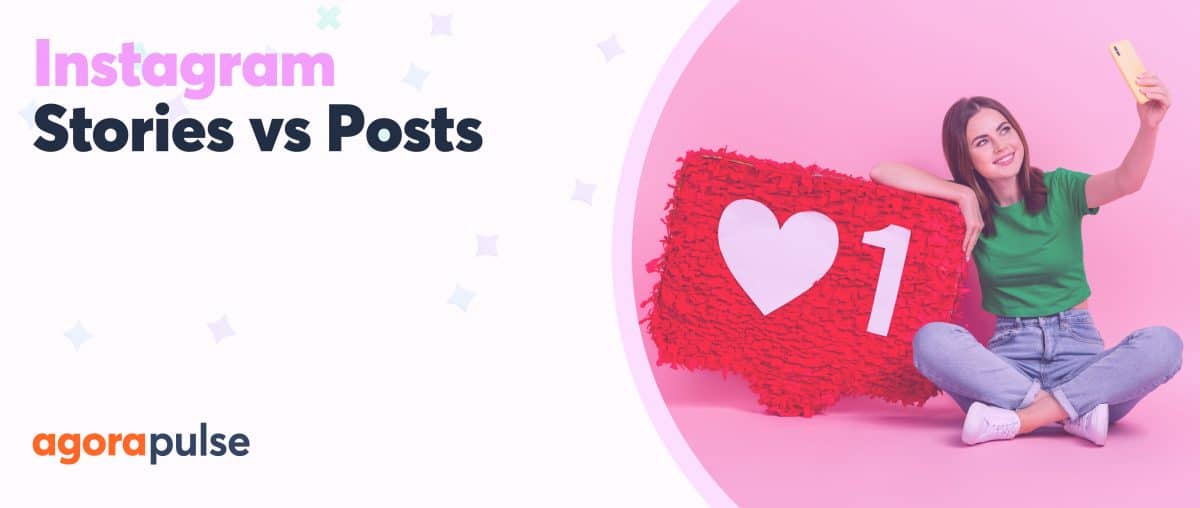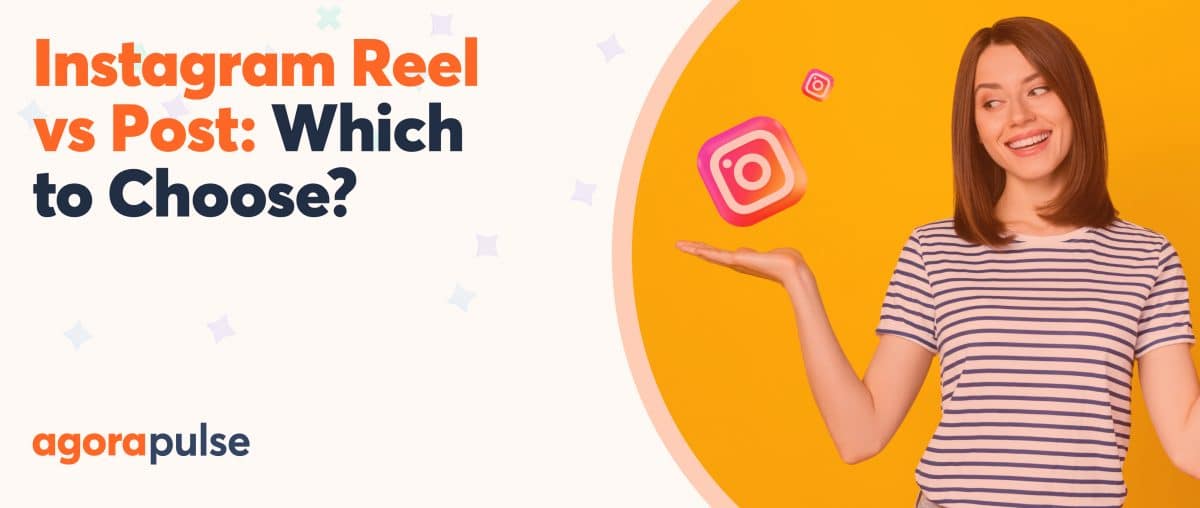Instagram Stories is all about building powerful, long lasting relationships with your followers by showing them your human side.
It’s a way to connect away from the picture perfect regular feed and add a dash of whimsy and personality that disappears after 24 hours.
Now that you are using Instagram Stories for your business, it’s time to get serious and start measuring that ROI.
That’s where metrics come in. Measuring and analyzing certain key performance indicators lets you know whether your efforts are working or if the time has come to step up your game.
You don’t want to keep making stabs in the dark! Instead, you want to build a clear picture of what’s working and what isn’t.
But how do you measure your Instagram Stories ROI? Let’s take a look at some key metrics and how to calculate them.
How to track your Instagram Stories metrics
As marketers, we are obsessed with tracking, measuring and analyzing. It’s all for a good cause, honest! The right kind of metrics can paint a very clear picture of what’s really going on with your audience.
Metrics show us the behavior that goes on when no one but the bots are paying attention.
At the moment, Instagram insights doesn’t cover the performance of any posts you make in Stories. But you can track certain key stats by swiping up when you are watching your own story.
There are four different numbers you want to pay particular attention to!
1. Total number of views
The little eye icon tells you how many people have viewed your story.
If you want a more detailed break down you can check exactly who viewed your story underneath. This is super useful if you are trying to engage a particular audience segment!
Yes, the number of views isn’t exactly a hard stat and it doesn’t always mean what we think it means. What it is, is the brilliant number you are going to use as the base for some mathematics!
2. Calculate your view percentage
Math time!
To figure out the view rate take the number of people who viewed your story, divide it by the total number of followers you’ve got and multiply that number by 100.
Phew. Hadn’t done that in a while.
This nifty number lets you know what percent of your followers are watching your Stories. It paints a bigger, more complete picture than just the number of viewers.
A100 views are great if you have 1000 followers, but not so good if you have 100,000 followers.
The percentage gives you a real glimpse inside your Instagram Stories ROI.
You can use it to compare individual stories and determine what type of content does best with your followers.
3. The completion rate
Ready for some more arithmetic? The completion rate lets you know how many people watch your entire story.
To calculate the completion rate, you have to get a little bit creative. Divide the number of viewers of your last story by the number of people who saw your first post.
This stat tells you how good your posts are at grabbing and retaining attention. It’s natural to see a bit of drop off after the first one and every business is going to have a slightly different ideal completion average.
That’s why you have to establish your baseline.
Measure your completion rates for stories over a 14 day period and compare the numbers. What’s your average completion rate?
Dig into the stories with the highest and lowest completion rates. What drove the engagement? Did you run a specific promotion? Did you host a Q&A that your followers really responded to?
Make note of what’s working and what isn’t.
4. Total number of replies
Unlike your normal, in-feed Instagram posts where your followers can like and comment, the only way to engage in Instagram stories is to send a direct message. Your followers can DM you by simply tapping “send a message” in the bottom left hand corner as you’ll see in this example from Frog’s Leap Winery.
Keep track of the posts that generate the most engagement and reply back to build up the relationship.
Beyond Instagram Stories metrics
The stats we calculated above are pretty useful, but to measure the real Instagram Stories ROI, you need to step off the platform and look at how Instagram Stories impacts your overall marketing metrics.
Is it meeting the goals you set for it?
Social media is an amazing tool for building strong relationships.
But, it’s not yours. No matter how wonderful and useful, your social media profile will always be rented space. How you reach your fans is subject to proprietary algorithms and changing tastes.
The only real, lasting way to stay in touch with your clients for good is through your email list.
And Instagram just began testing a new feature that makes in incredibly easy to include a strong call to action and guide your followers over to your website.
Instagram Swipe
Instagram added a brand new feature to Stories. It now lets people with verified accounts link to a separate page and include a call to action (CTA).
By swiping up, you are taken to a separate website though the Instagram app. And, after following the call to action, you can click the x in the top right hand corner and be returned right to the app.
It’s an incredibly powerful tool with limitless potential and brands are already enjoying some incredible results . Since the feature was introduced, swipe through rates have ranged from 15-25%.
That’s a pretty amazing conversion rate!
You can use the CTA inside Instagram Stories to:
- Run a promotion for an event you are running
- Promote an online course through a series of shots and include a CTA to the landing page in the last one
- Share exciting and useful new content
- Tease a new product and include a link to its landing page
- Run a sale
The possibilities are endless! Experiment with a few and then use your analytics software (like Google Analytics) to track traffic from Instagram to your website. Just like you set specific goals when you use other social media platforms it’s paramount to set real, trackable goals for Instagram Stories.
The ultimate Instagram Stories ROI isn’t how many views or followers you get, though those numbers are pretty nice. It’s how many people you build a strong connection with who then visit your website and chose to stay in touch via your email list.
What do you think? Are you using Stories? How are you measuring your ROI?











